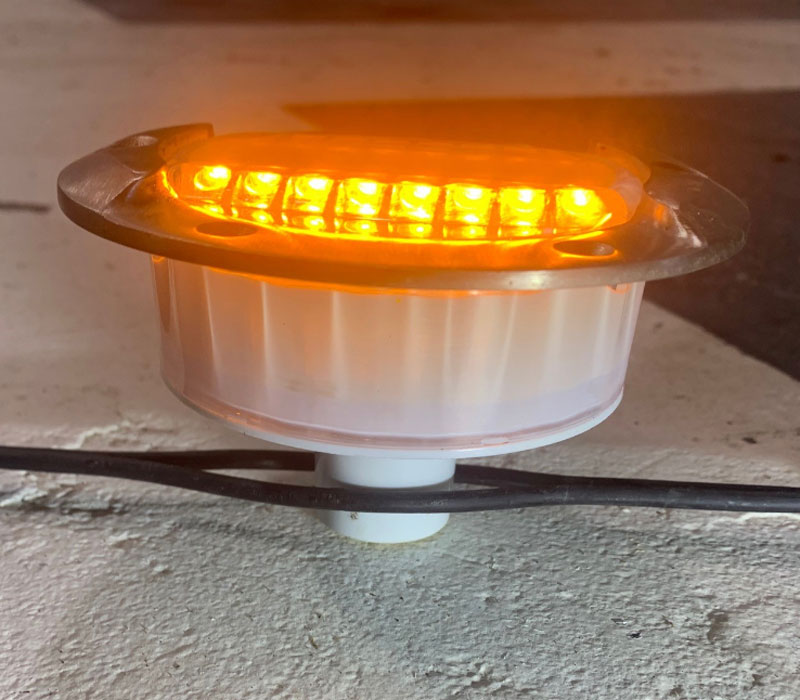Technology
Innovation in the Lighting Industry
Wireless Power
Wireless Inductive Power Transfer (IPT) is the transfer of electrical energy through magnetic induction without the need for wires as a physical link. An IPT system represents a breakthrough in product durability, control and electrical safety.
In inductive coupling (electromagnetic induction or inductive power transfer, IPT), power is transferred between coils of wire by a magnetic field. An alternating current (AC) through the transmitter coil creates an oscillating magnetic field by Ampere’s law. The magnetic field passes through the receiving coil where it induces an alternating EMF (voltage) by Faraday’s law of induction, which creates an alternating current in the receiving coil that powers the LED’s or other devices.
The inductive system is very simple to use and install, with a minimum number of components. A single power supply can power and control up to 200 markers over a distance 1.5 miles. The use of inductive power reduces the total cost of ownership and enhances the return on investment in LED lighting solutions.


Wireless Communication
Wireless Inductive Communications Transfer (ICT) is a 2-way communication standard that operates over the existing power track. ICT facilitates advanced system controls, monitoring, analytics, and connectivity. Paired with integrated (or independent) vehicle detection & environmental sensors, an ICT capable system can extract, distribute, and act on actionable data-driven insights.
It is an effective method of transferring data in both directions across the physical gap between the cable and LED’s. ICT modems use silicon chip-sets specifically designed to handle the workload of pulling data out of an electric current. Using advanced modulation techniques and adaptive algorithms, ICT modems are capable of handling power cable noise on a wide spectrum.
Our intelligent product range has the capability of communication and diagnosis (via ICT to devices, e.g. lights) means that each light device can send and receive information and, therefore, be individually controlled from the power supply. Our power supplies can communicate various light sequences for different operating states (flashing, pulsing, and degrees of brightness) including for emergency situations or to switch from daytime to nighttime intensity.